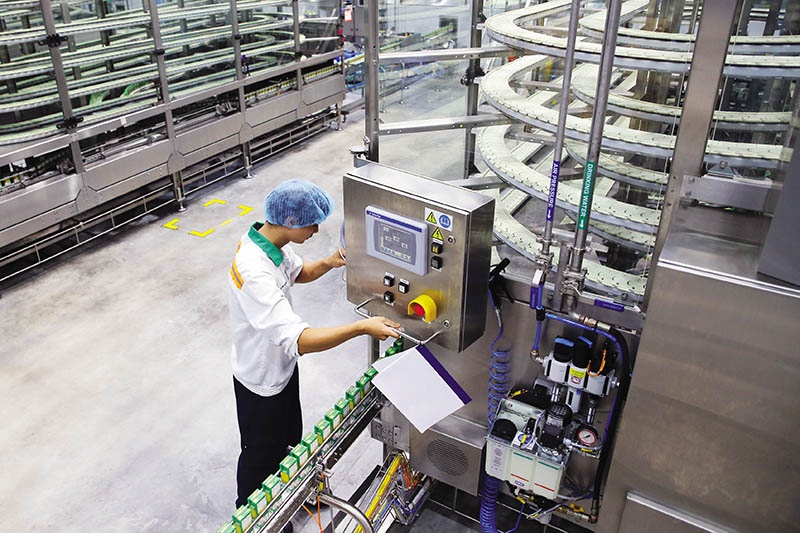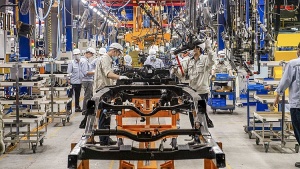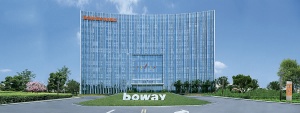Manufacturing sector reports August growth
 |
At 50.5 points, the index was up from 48.7 points in July, representing a marginal monthly improvement in business conditions for the manufacturing sector. This modest revival comes after earlier signs of increased demand as manufacturers reported the first growth in new orders in six months while new export business increased after a five-month fall. Similarly, manufacturing output increased in August, reversing a five-month trend of decline. However, the rate of increase was again only minor.
Firms have been ramping up their purchasing activity at a steady rate in response to the increase in new orders and higher output requirements. The increase was the first in six months and was the most significant since September 2022.
The employment picture was less positive, however, with firms remaining hesitant to commit to hiring additional staff. August saw a drop in workforce numbers for the sixth month in a row, although the rate of job losses was at its lowest for that period.
Ongoing job losses indicate continued signs of spare capacity in the sector, with work backlogs decreasing for the eighth consecutive month. Firms also recorded a build up of stocks of finished goods for the second month running, amid reports that weak demand had left finished products unsold.
Data from August pointed to a solid increase in input prices, thereby ending a three-month period of decline. A number of experts have linked higher input costs to rising oil prices, while increased food prices were also mentioned. In turn, firms raised their own selling prices, albeit only slightly. The increase in charges was the first since March.
Andrew Harker, economics director at S&P Global Market Intelligence, said, “These latest figures paint a more encouraging picture of the health of the sector than had been the case recently, with output, new orders, exports and purchasing all returning to growth. However, as demand remains quite fragile, it is probably too early to say that the sector is in full recovery mode."
"Another key aspect from this survey was the end of the recent period of falling prices, with both input costs and selling charges up in August, often linked to higher oil prices," he added.
 | Smart and steady with relocation to Vietnam More foreign corporations are relocating production to Vietnam to diversify their sup-ply chains, spurring the trend of digital transformation and smart manufacturing in Vietnam. Ryohei Oda, managing director of ABeam Consulting Vietnam, shared with Thanh Van his insight into this trend. |
 | Vietnamese manufacturers show signs of stabilisation amidst market slowdown The Vietnamese manufacturing sector remains in contraction but has shown some signs of stabilisation, with slower reductions in output, new orders, and employment. |
 | Boway Group to invest $350 million in solar manufacturing facility China's Boway Group has inked a land lease agreement in Cong Hoa Industrial Park in the northern province of Hai Duong. The group is planning a $350 million advanced solar manufacturing facility, with operations set to commence in 2024. |
What the stars mean:
★ Poor ★ ★ Promising ★★★ Good ★★★★ Very good ★★★★★ Exceptional
 Tag:
Tag:
Related Contents
Latest News
More News
- Global partnerships key to Vietnam’s IFC development (December 26, 2025 | 16:18)
- Vingroup pulls out of bid to invest in North-South high-speed railway (December 26, 2025 | 11:42)
- Strengthening supply chains through trade promotions and customs reform (December 24, 2025 | 14:00)
- PM orders investment model for North–South high-speed rail (December 22, 2025 | 17:43)
- LS Eco Energy to invest in Vietnam rare earth sector (December 22, 2025 | 17:31)
- Government moves to establish International Financial Centre (December 21, 2025 | 21:00)
- Vietnam's IFC to target global investment flows (December 21, 2025 | 18:00)
- Two national hospitals expand capacity with new facilities (December 20, 2025 | 09:00)
- Ha Tinh breaks ground on major Vingroup industrial and energy projects (December 19, 2025 | 18:24)
- EVN launches major power infrastructure projects nationwide (December 19, 2025 | 18:17)























 Mobile Version
Mobile Version